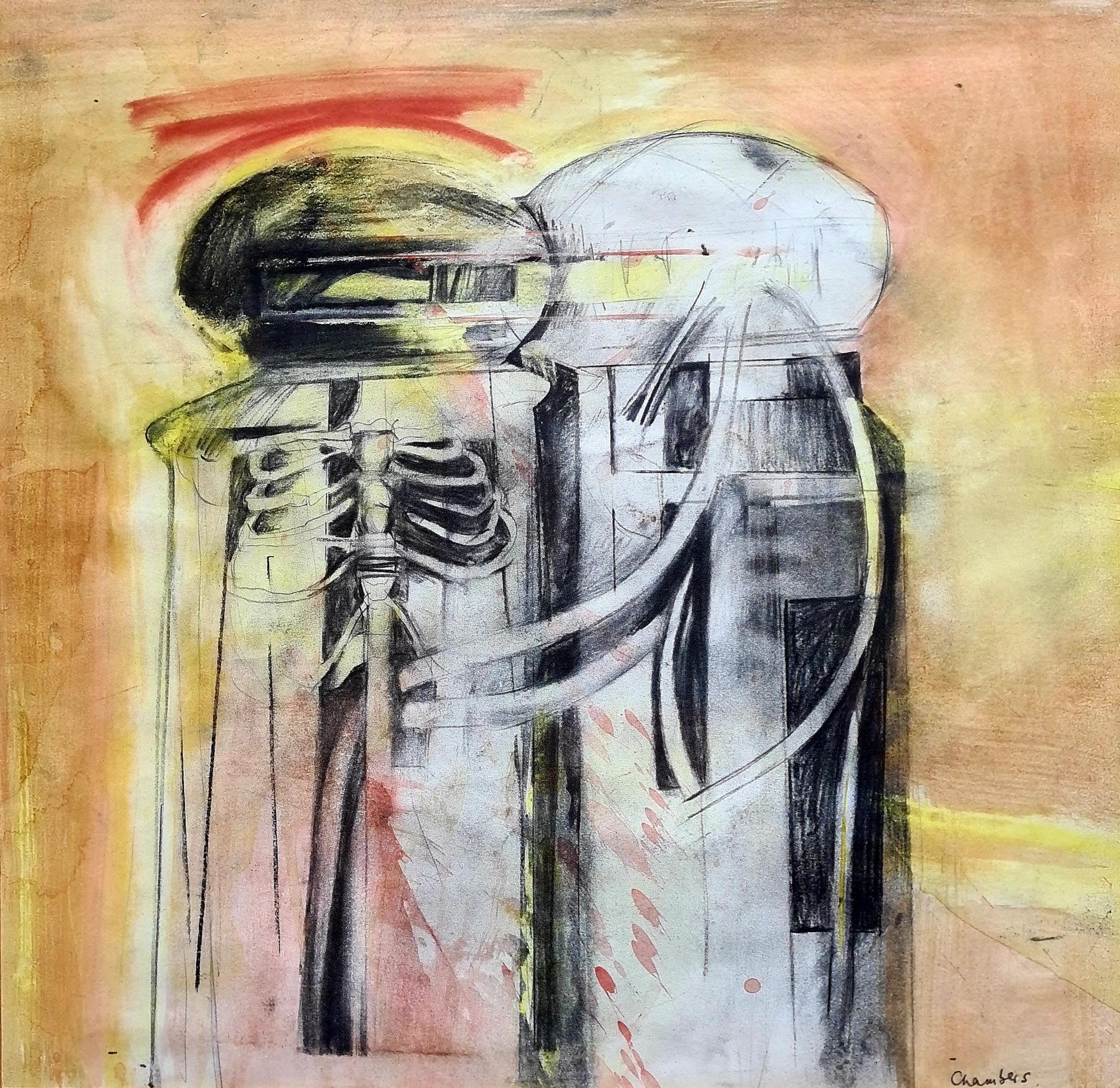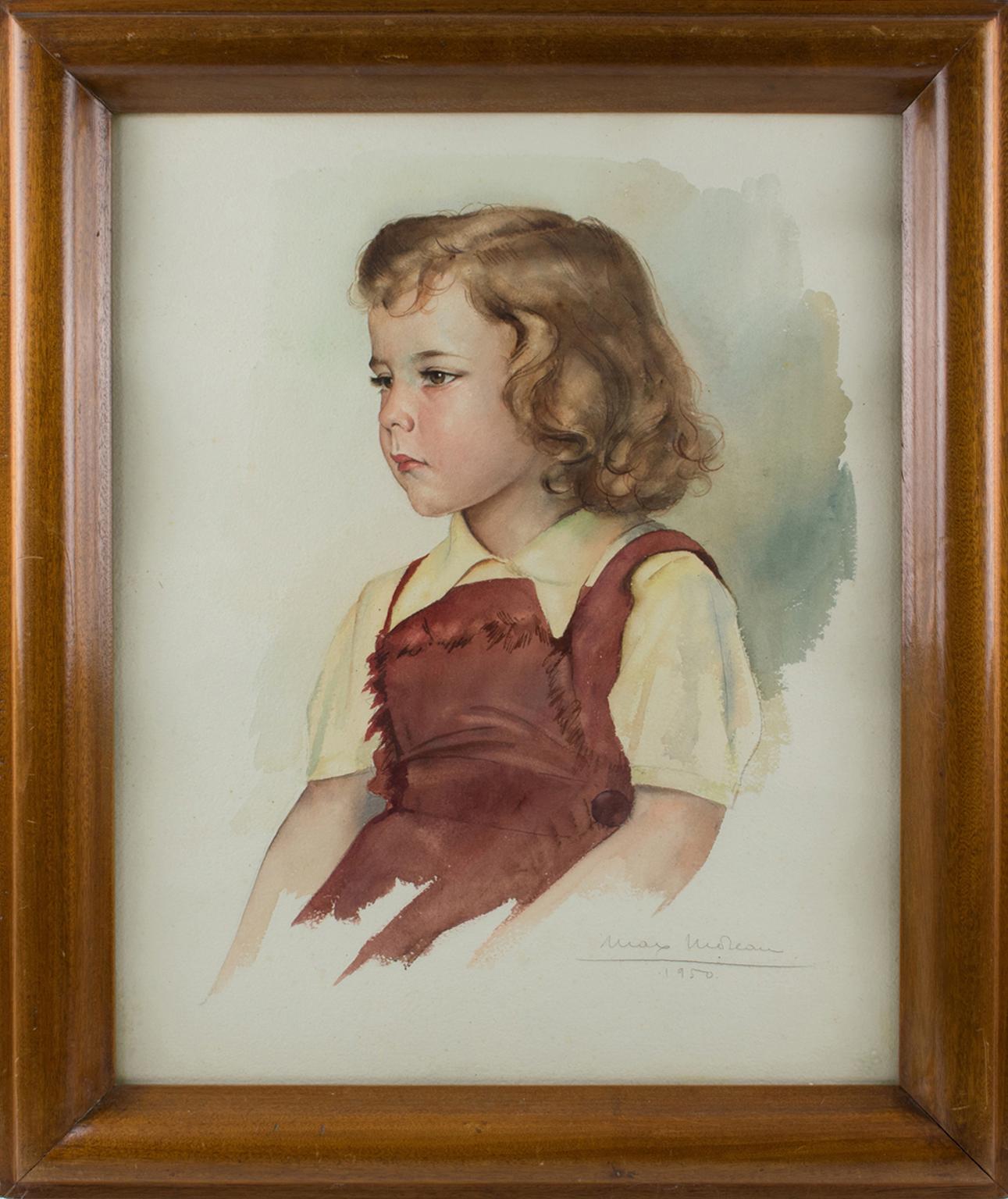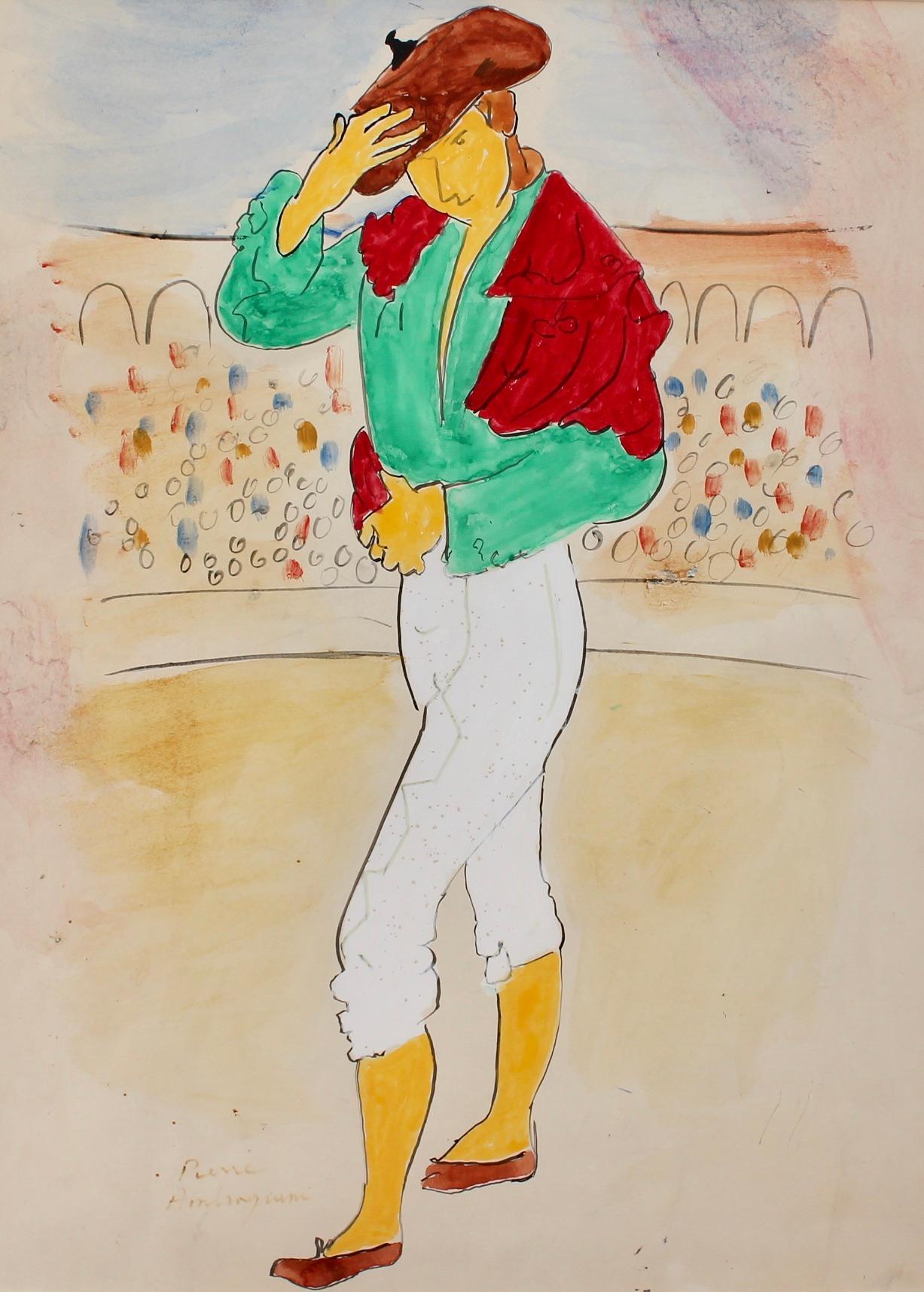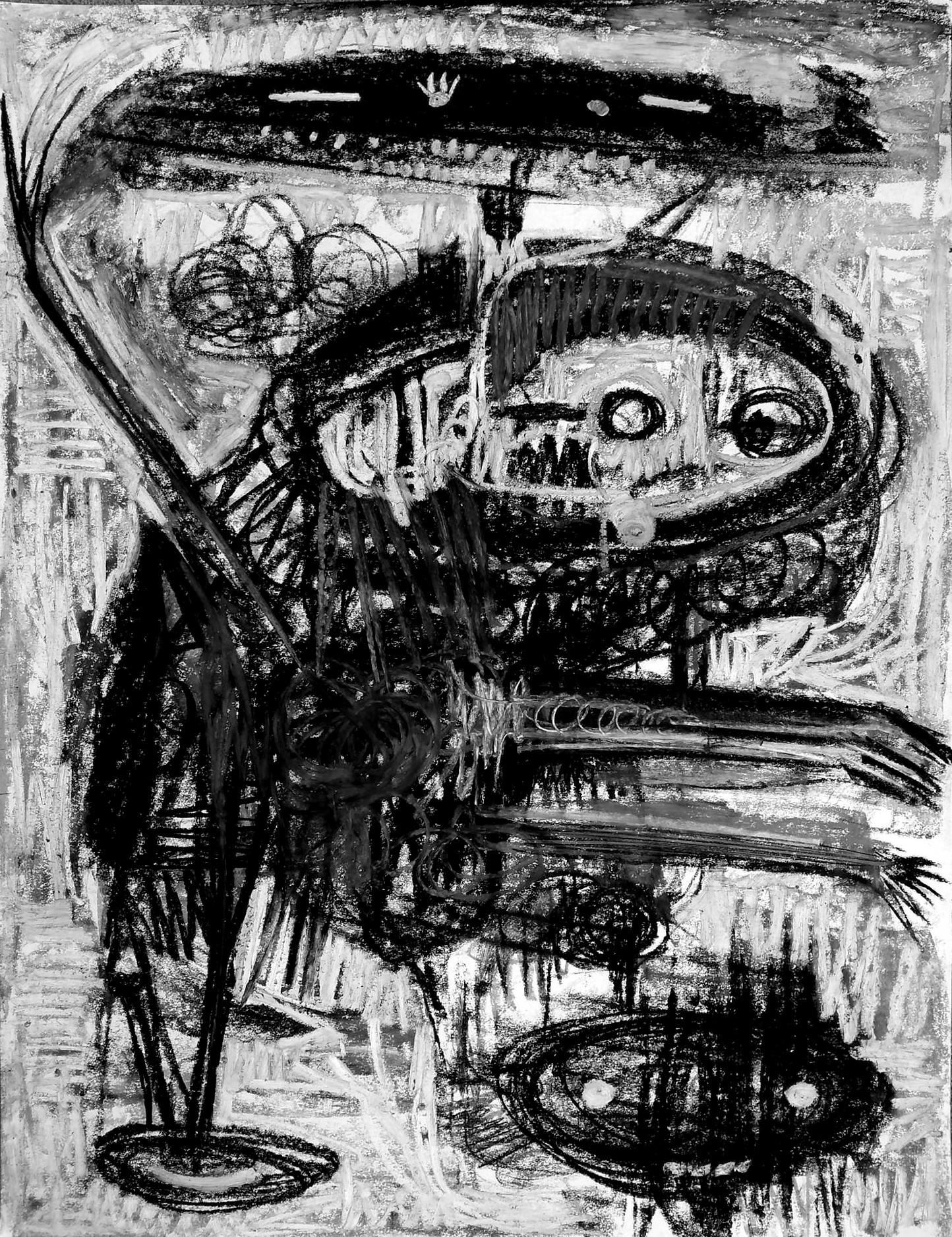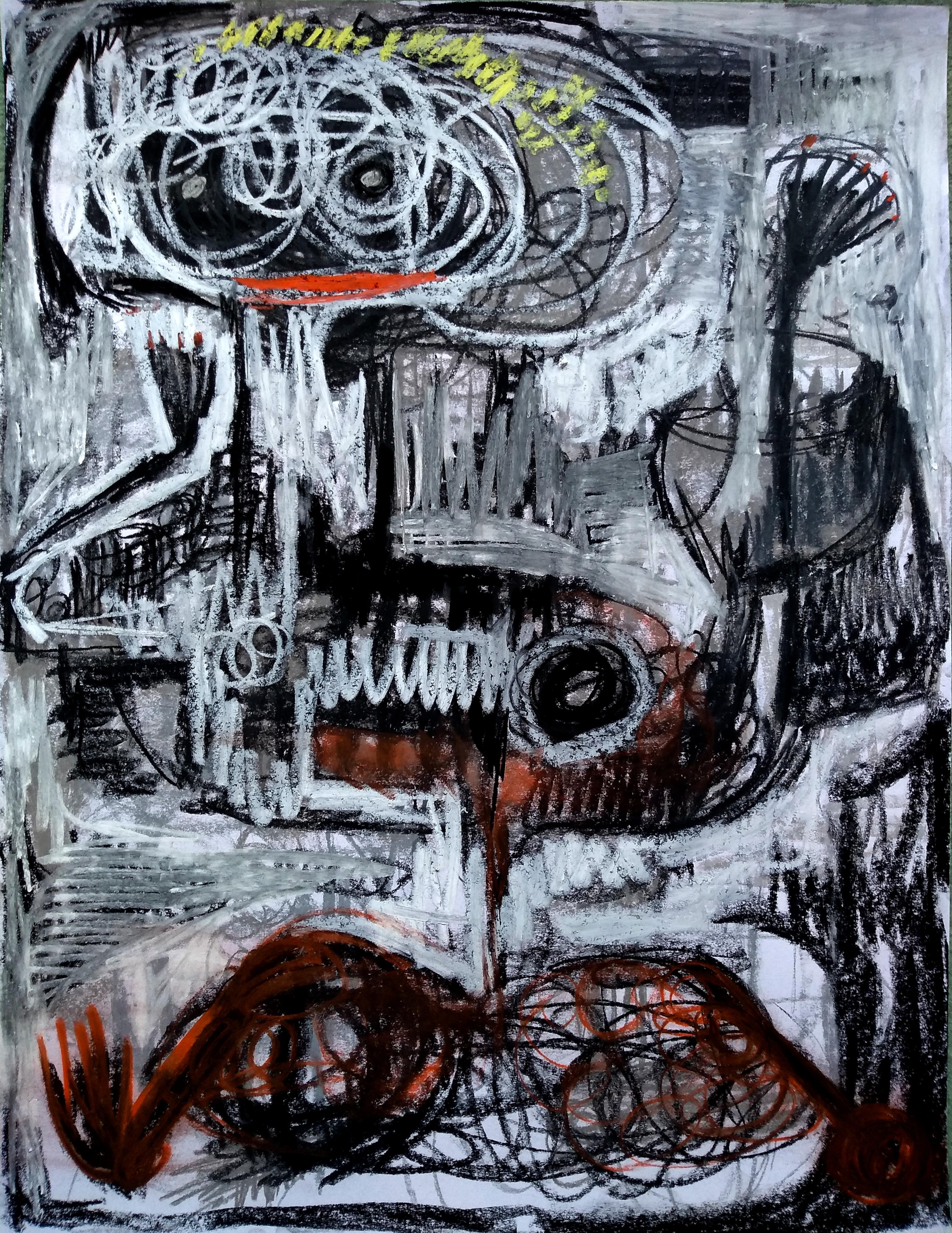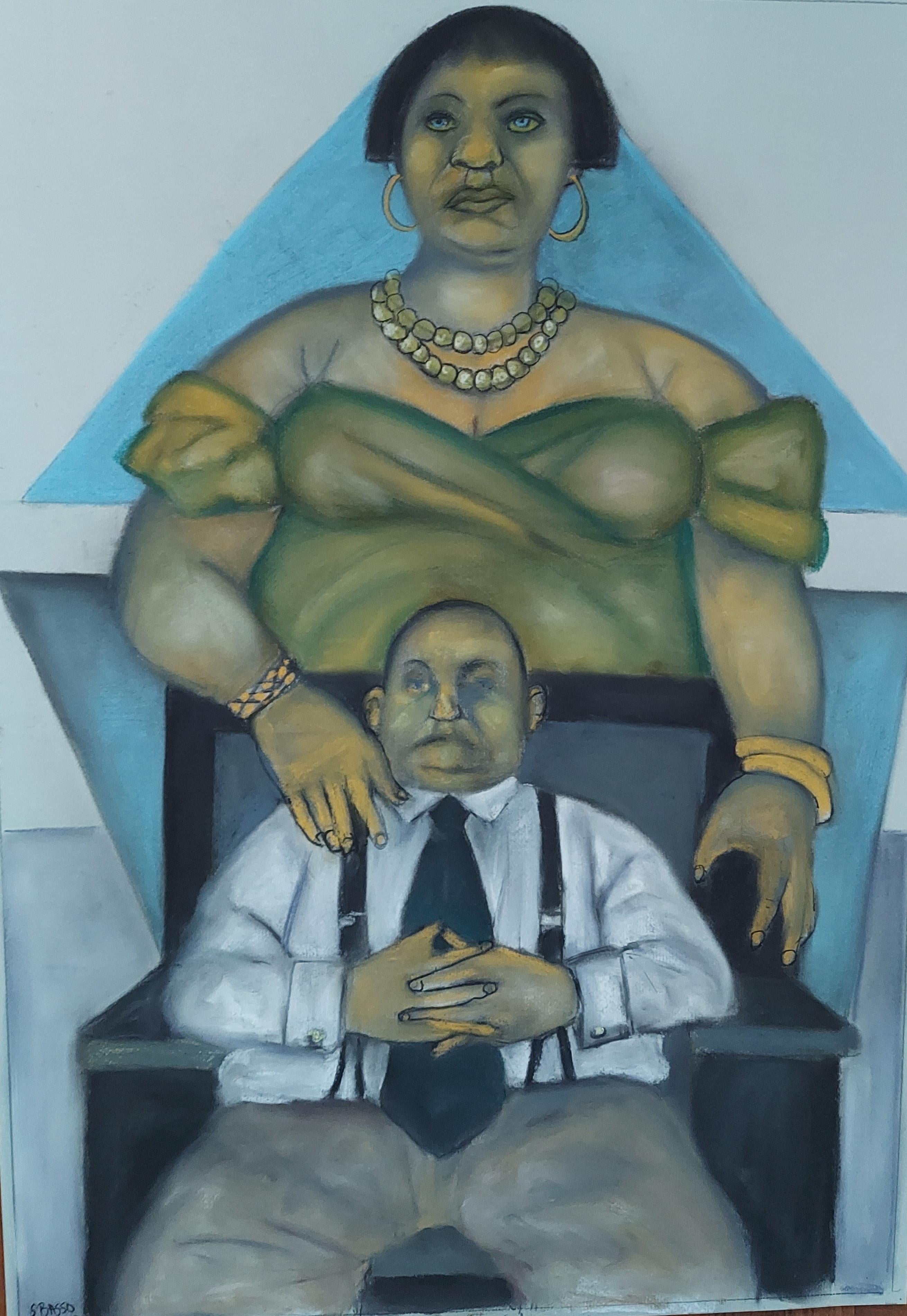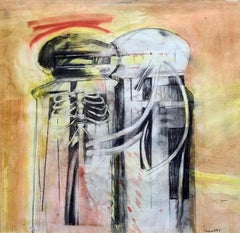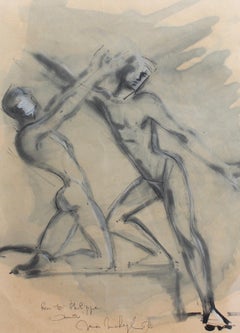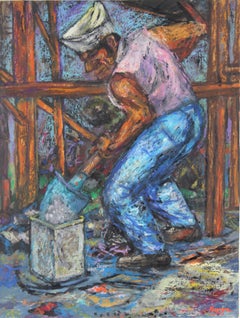
Portrait of a Worker with a Shovel, Pastel on Paper Drawing, 1954
View Similar Items
1 of 5
Byron RandallPortrait of a Worker with a Shovel, Pastel on Paper Drawing, 19541954
1954
About the Item
- Creator:Byron Randall (1918-1999, American)
- Creation Year:1954
- Dimensions:Height: 20 in (50.8 cm)Width: 15.25 in (38.74 cm)
- Medium:
- Movement & Style:
- Period:
- Condition:Minor vintage wear.
- Gallery Location:San Francisco, CA
- Reference Number:Seller: 331571stDibs: LU29821192013
You May Also Like
- Ex Machina, Nicaragua Solidarity CampaignLocated in Cotignac, FRA late 20th Century watercolour and pastel drawing of machines in a landscape by British artist Paul Chambers. The painting is signed bottom right and carries an exhibition label for...Category
Late 20th Century Contemporary Figurative Drawings and Watercolors
MaterialsPaper, Pastel, Watercolor, Gouache
- Rare Modernist Hungarian Rabbi Pastel Drawing Gouache Painting Judaica Art DecoBy Hugó ScheiberLocated in Surfside, FLRabbi in the synagogue at prayer wearing tallit and tefillin. Hugó Scheiber (born 29 September 1873 in Budapest – died there 7 March 1950) was a Hungarian modernist painter. Hugo Scheiber was brought from Budapest to Vienna at the age of eight where his father worked as a sign painter for the Prater Theater. At fifteen, he returned with his family to Budapest and began working during the day to help support them and attending painting classes at the School of Design in the evening, where Henrik Papp was one of his teachers. He completed his studies in 1900. His work was at first in a post-Impressionistic style but from 1910 onward showed his increasing interest in German Expressionism and Futurism. This made it of little interest to the conservative Hungarian art establishment. However, in 1915 he met the great Italian avant-gardist Filippo Tommaso Marinetti and the two painters became close friends. Marinetti invited him to join the Futurist Movement. The uniquely modernist style that he developed was, however, closer to German Expressionism than to Futurism and eventually drifted toward an international art deco manner similar to Erté's. In 1919, he and his friend Béla Kádar held an exhibition at the Hevesy Salon in Vienna. It was a great success and at last caused the Budapest Art Museum to acquire some of Scheiber's drawings. Encouraged, Scheiber came back to live in Vienna in 1920. A turning point in Scheiber's career came a year later, when Herwarth Walden, founder of Germany's leading avant-garde periodical, Der Sturm, and of the Sturm Gallery in Berlin, became interested in Scheiber's work. Scheiber moved to Berlin in 1922, and his paintings soon appeared regularly in Walden's magazine and elsewhere. Exhibitions of his work followed in London, Rome, La Paz, and New York. Scheiber's move to Germany coincided with a significant exodus of Hungarian artists to Berlin, including Laszlo Moholy-Nagy and Sandor Bortnyik. There had been a major split in ideology among the Hungarian avant-garde. The Constructivist and leader of the Hungarian avantgarde, Lajos Kassák (painted by Hugó Scheiber in 1930) believed that art should relate to all the needs of contemporary humankind. Thus he refused to compromise the purity of his style to reflect the demands of either the ruling class or socialists and communists. The other camp believed that an artist should be a figurehead for social and political change. The fall out and factions that resulted from this politicisation resulted in most of the Hungarian avant gardists leaving Vienna for Berlin. Hungarian émigrés made up one of the largest minority groups in the German capital and the influx of their painters had a significant effect on Hungarian and international art. Another turning point of Scheiber's career came in 1926, with the New York exhibition of the Société Anonyme, organized by Katherine Dreier. Scheiber and other important avant garde artists from more than twenty-three countries were represented. In 1933, Scheiber was invited by Marinetti to participate in the great meeting of the Futurists held in Rome in late April 1933, Mostra Nazionale d’Arte Futurista where he was received with great enthusiasm. Gradually, the Hungarian artists began to return home, particularly with the rise of Nazism in Germany. Kádar went back from Berlin in about 1932 and Scheiber followed in 1934. He was then at the peak of his powers and had a special flair in depicting café and cabaret life in vivid colors, sturdily abstracted forms and spontaneous brush strokes. Scheiber depicted cosmopolitan modern life using stylized shapes and expressive colors. His preferred subjects were cabaret and street scenes, jazz musicians, flappers, and a series of self-portraits (usually with a cigar). his principal media being gouache and oil. He was a member of the prestigious New Society of Artists (KUT—Képzőművészek Új Társasága)and seems to have weathered Hungary's post–World War II transition to state-communism without difficulty. He continued to be well regarded, eventually even receiving the posthumous honor of having one of his images used for a Russian Soviet postage stamp (see image above). Hugó Scheiber died in Budapest in 1950. Paintings by Hugó Scheiber form part of permanent museum collections in Budapest (Hungarian National Museum), Pecs (Jannus Pannonius Museum), Vienna, New York, Bern and elsewhere. His work has also been shown in many important exhibitions, including: "The Nell Walden Collection," Kunsthaus Zürich (1945) "Collection of the Société Anonyme," Yale University Art Gallery, New Haven, Connecticut (1950) "Hugó Scheiber: A Commemorative Exhibition," Hungarian National Museum, Budapest (1964) "Ungarische Avantgarde," Galleria del Levante, Munich (1971) "Paris-Berlin 1900-1930," Centre Georges Pompidou, Paris (1978) "L’Art en Hongrie, 1905-1920," Musée d’Art et l’Industrie, Saint-Etienne (1980) "Ungarische Avantgarde in der Weimarer Republik," Marburg (1986) "Modernizmus," Eresz & Maklary Gallery, Budapest (2006) "Hugó Scheiber & Béla Kádár," Galerie le Minotaure, Paris and Tel Aviv (2007) Hugó Scheiber's paintings continue to be regularly sold at Sotheby's, Christie's, Gillen's Arts (London), Papillon Gallery (Los Angeles) and other auction houses. He was included in the exhibition The Art Of Modern Hungary 1931 and other exhibitions along with Vilmos Novak Aba, Count Julius Batthyany, Pal Bor, Bela Buky, Denes Csanky, Istvan Csok, Bela Czobel, Peter Di Gabor, Bela Ivanyi Grunwald, Baron Ferenc Hatvany, Lipot Herman, Odon Marffy, C. Pal Molnar...Category
Early 20th Century Modern Figurative Paintings
MaterialsPaper, Charcoal, Pastel, Watercolor, Gouache
- Modern DancersBy Mick MicheylLocated in London, GB'Modern Dancers', pastel, ink and gouache on fine art paper by French artist, singer and sculptor, Mick Micheyl (1964). Two elegant young men are depicted in a graceful dancing pose, arms outstretched, their lithe bodies so agile and limber. Perhaps one of the dancers was her friend, Philippe, to whom the painting is dedicated on the bottom. The dedication says: 'For you Philippe, all my friendship'. Signed: 'Mick Micheyl'. The work has been newly framed and glazed after having been acquired in the S. of France. It is in fair vintage condition commensurate with age showing minor blemishing on the paper. Upon request a video of the piece can be provided. Dimensions with Frame: H 75 cm / 29.5" W 61 cm / 24" Dimensions without Frame: H 56 cm / 22" W 42 cm / 16.5" About the Artist: Mick Micheyl (1922 - 2019) was born in Lyon and had a busy and rewarding artistic career as a singer, producer, reviewer, metal sculptor, artist. After having received training at the School of Fine Arts in Lyon she became a painter and decorator in the theatre but then commenced a career in the musical activities of a theatrical troupe. She won the ABC competition in Paris in 1949 with a song, Le Marchand de Poésie, which she composed herself. She then performed in many cabarets: L'Échelle de Jacob, Harlequin and Liberty's. In the 1950s she was one of the most important French cabaret singers of that period. One of her titles, 'Un Gamin de Paris', became one of the French standards and also performed by Yves Montand and Robert Clary...Category
1960s Modern Portrait Drawings and Watercolors
MaterialsGouache, Paper, Pastel, Ink
$1,535 Sale Price40% Off - Portrait of Young Girl Gouache Painting by Max MoreauBy Max MoreauLocated in Atlanta, GA1950s portrait, gouache on paper painting by Belgian artist Max Moreau (1902 - 1992). A finely detailed portrait of a lovely young girl looking like a good child from the period right after WWII. Moreau captures the sweet expression, soft features, and calm, well-mannered demeanor of that child. Hand-signed and dated on the bottom right corner. The artist demonstrates incredible skill in detailing this portrait with gouache and watercolor. This skill has made his portraits so desirable for international collectors. The painting still has its original elegant mahogany carved frame with glass protection. Measurements: With frame: 25.19 in wide (64 cm) x 30.32 in high (77 cm) x 2.38 in deep (6 cm). Opening view: 19.69 in wide (50 cm) x 24.50 in high (62 cm). Note: Max Leon Moreau (1902 - 1992) Moreau is a highly acclaimed artist born in Belgium. He is best known for his loosely brushed street scenes of Paris, Granada, and North Africa and his revealing portraits of met characters during his foreign travels. Taught to paint by his father, the family moved to Paris, where he made copies of paintings at the Louvre Museum. Later Moreau and his family lived in Tunisia and Morocco before settling in Granada, Spain. Following his death in 1992, his home was converted into a museum dedicated to his life and work. His paintings are internationally collected and appear at auction in major international houses. Max spent his last 30 years living in his Moorish-style house in Granada, which upon his death, was bequeathed to the City of Granada along with the contents of his studio and artwork. The City of Granada has turned his home into a museum showcasing his paintings, studio, and private life. The main building of the Casa Museo Max Moreau houses an exhibition space that takes us on a journey through his most common themes: portraits, still-life, and landscapes, represented through oil paintings, watercolors, and drawings on paper. There is also a series of models for theatre creations that illustrate his interest and relationship to the scenic arts (he was involved in many productions as an actor, playwright, musician, and set designer). The building is an original from the region of Albayzín and is popularly known as Carmen. Does the name come from the Arabic word Karm which means vine, orchard, or garden.?The second building houses his studio, remained untouched: the easel next to the window, a piano with scores, and a collection of oriental objects...Category
1950s Expressionist Portrait Paintings
MaterialsPaper, Gouache
- La MonteraBy Pierre AmbrogianiLocated in London, GB'La Montera', gouache, watercolour and ink on art paper, by Pierre Ambrogiani (circa 1960s). The artist created many artworks with bullfighting as theme. In this case, a single torer...Category
1960s Expressionist Portrait Drawings and Watercolors
MaterialsPaper, Watercolor, Gouache
$1,228 Sale Price40% Off - The Racing HorsesBy Pierre GaillardotLocated in London, GB'The Racing Horses', gouache on art paper (circa 1970s), by Pierre Gaillardot. France has produced some of the world’s greatest horses and riders, wi...Category
1970s Expressionist Animal Drawings and Watercolors
MaterialsPaper, Gouache
$1,164 Sale Price30% Off
Recently Viewed
View AllMore Ways To Browse
Mexico Sign
Paper Construction
Construction Scene
Phillips Collection
The Phillips Collection
Worker Painting
Shovel Used
Shovels Used
Legion Of Honor
Vintage Construction Paper
Vintage West Coast
Merchant Portrait
California Coast Watercolor
Mexican Gouache
Construction Worker
Vintage Byron
California Worker Art
Mendocino Paintings
